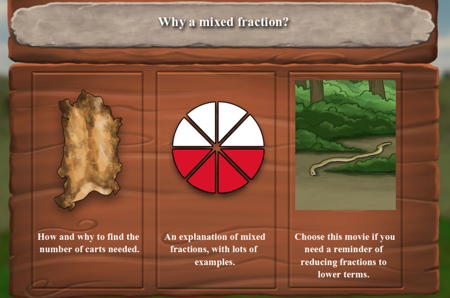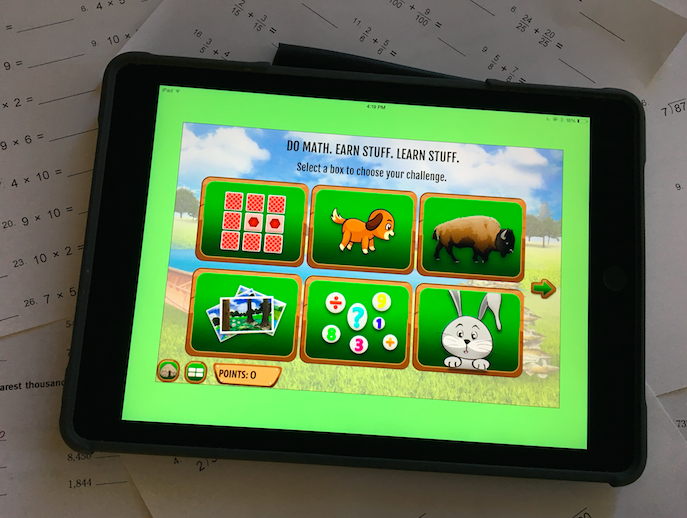I know that our games help students indirectly in that teachers use the game as an incentive for students to study:
“All right, boys and girls, how many of you are on level 4 of Spirit Lake? Well, when you get to level 4, you’re going to need to divide. If you don’t know how to divide, you’re never going to pass it. If you can’t figure out division, you’ll be one of the hunters left behind and you’ll never get to go on the buffalo hunt.”
I’m fine with that. Teachers are underpaid, overworked and expected to be miracle workers. Anything we can do to help them, I am all for it.
However, I also believe that there are three reasons that our games benefit students directly:
1. Practice – the more you do something, the better you get at it, but more than that it is deliberate practice. That is, we don’t have a game where you are only asked to rapidly answer as many multiplication problems as possible in a minute. We do include that because number fluency is important, but we also have problems that ask if you are putting a border around your room and it is 20 feet long and 30 feet wide, how long of a border do you have to buy. If you’re looking for research on which this based, look no further than Thorndike’s Law of Transfer that says the more similar the situation in which a skill is learned to the one in which it is practiced, the more transfer will occur.
2. Not everyone learns the same way. This is based on a mountain of research showing that people have various ways of learning. Read the book “Frames of Mind” for a highly readable look at the theory of multiple intelligences. Almost every time a player is learning a new concept, he or she is presented with a choice of watching a video, reading a web page, listening to the page read or doing an activity. Some of our pages combine both manipulation and text/ audio. For example, computing perimeter, the player clicks an arrow and the game character walks along the sides, counting the feet.
3. Varied practice. I know I said practice again, but hear me out. I wrote my dissertation on intelligence testing and in the process collecting over a hundred definitions of intelligence. One said, “the essential difference between a genius and a moron is the failure to generalize.” Moron, in case you don’t know, was actually a classification for a degree of mental retardation. Idiot, imbecile and moron were what we now call profound, severe and mild mental retardation. But, I digress. Even more than usual. It is true, though, that when I worked with students with mental retardation I noticed that they had great difficulty with generalization. If they learned in home economics class (yes, we had that) to use liquid laundry detergent to wash clothes, when they had solid detergent they did not recognize it as the same thing. I see the same thing happen with math, with people who are not at all mentally retarded. They learn that 7 times 8 = 56 but are confused when asked “If hamburger is $7 a pound and you need to buy 8 pounds of hamburger, how much money do you need?” They are taught identify 1/4 as a fraction when 1 out of 4 boxes in a rectangle are shaded or when 1 out of 4 pizza slices are missing. However, they miss that it is the same 1/4 when you have walked 1/4 of the way to your destination or taken 1/4 of the pencils out of a box. In my experience teaching math at every level from middle school through doctoral students, EXAMPLES MATTER. Having just gobs of examples in lots of different contexts, helps students generalize.
So, there you have it, based on research and experience in education, how our games help students do better in math.
You’re welcome.
Check out our games here. Cost ranges from free (!) to less than ten bucks.



